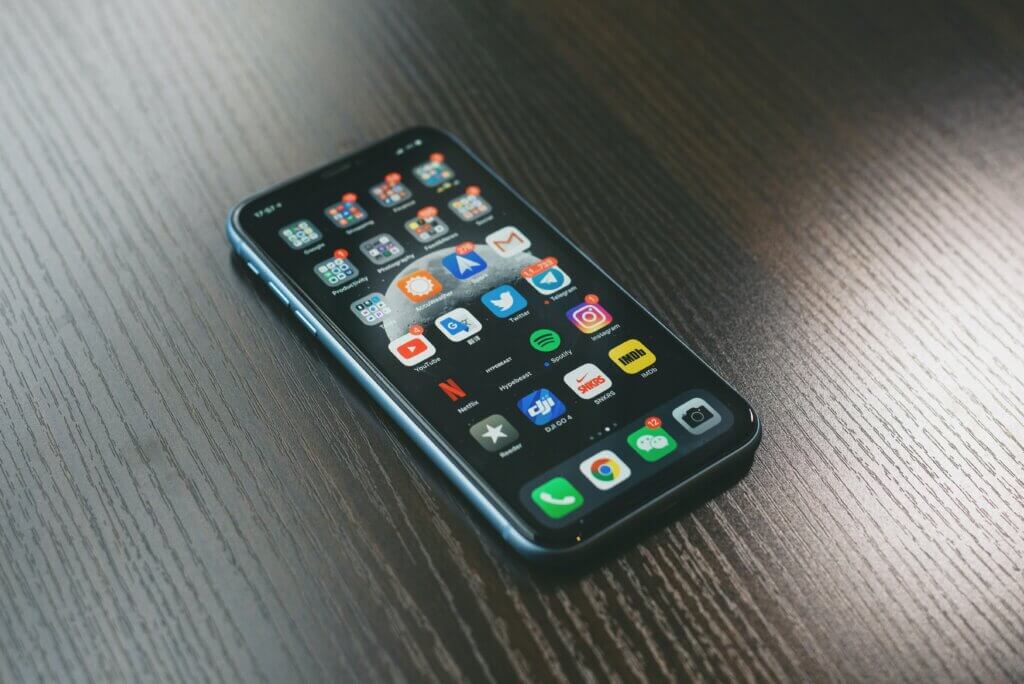 | |
What are location services?
These are the symbols used by Android and Apple devices for location services. They are used to indicate when a device is actively calculating its current location.
This can be done in a number of ways but most commonly uses GPS (global positioning system) to pinpoint the location of the device, and therefore its owner.
GPS uses satellites to provide location information to the receiver in the device. It does not require data or phone reception as it operates separately from these systems, however devices now will often use a combination of GPS, internet and telephone systems to provide geolocation information, which can then be shared through a variety of services.
How is that information used?
Geolocation information is used in lots of different ways, by both a device’s operating system and by other apps that may be installed.
Some services enable users to check into a specific location (for example on social media), others log movements in real time (mapping services and some games) and lots of services will use a device’s location to try and provide you with more relevant information.
For example, if you search the name of a chain of shops online, the internet browser may use geolocation information to identify which branches of that shop are closest to you and will then show you these at the top of the first page of search results.
What are the risks?
Some services allow users to share geolocation information with other people – friends, family, or even strangers. For adults and children alike, it’s important to ask: do I really want to broadcast this information to everyone?
For example logging in at home not only tells people when you are at home but also tells people where your home is. The same rules apply for your friend’s houses and school – if you wouldn’t want to put yourself at risk by broadcasting your personal address then why would you do it to your friends?
For young people in particular, even if they’re not sharing a location which is important to them, there are always risks involved with sharing their live location at a given time, especially if that information is visible to strangers.
Finally checking in regularly from the same locations can develop patterns and lead to people building up an accurate picture of someone’s movements, which could also lead to safety concerns.
Is using location services ever okay?
Of course! Location services can be really useful and some apps need location information to do their job. Services like weather apps, mapping apps or travel planner apps will use your location to provide you with the most relevant or up-to-date information.
Sharing your location with close friends and family can also be useful. You may want to track your child’s movements as they travel home from school to ensure they’re safe or two friends meeting up could share their live location to help find each other.
What settings are there to help?
There are two ways to manage who or what is accessing location information:
- At a device level
- Through individual apps
What advice can I share with my child?
Discussing how to use the internet safely and positively with your child is always a great idea and talking about location services is a great way to help your child protect their personal information. Why not share these top tips with your child?
Remember that the majority of services will have tools to manage whether or not you wish to share your location, these can often be accessed via the privacy or account settings. Some services may have geolocation activated as a default, so you will need to actively turn this setting off if you don’t want to reveal your location when posting and sharing content. On mobile devices you can usually turn off location services for all apps within the ‘general settings’ menu.
Sometimes it can be easy to find things out about people online, but you need to ask yourself if you really want to broadcast this information to everyone? For example, checking in at home not only tells people when you are at home but also tells people where your home is. The same rules apply for your friends’ houses and school, if you wouldn’t want to put yourself at risk by broadcasting your personal address then why would you do it to your friends?
If location updates on one service or social network are linked to a public account on another, you may be publishing to a larger audience than you think. Make sure all linked accounts are visible only to friends.
Checking in regularly from the same locations can reveal a develop pattern or routine and may lead to people building up an accurate picture of your movements, which can lead to safety concerns.
Many apps will prompt users with a pop-up asking them for permission to access location information on a device. Remind children to read the information on pop-ups carefully before clicking yes and for devices used by younger children, review which apps they have shared location permissions with on a regular basis.
